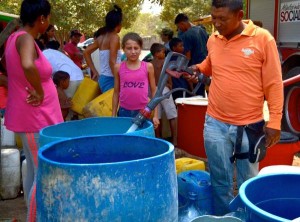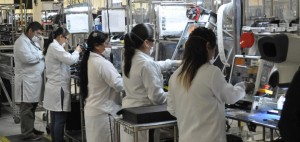By Steve Taylor
Rio Grande Guardian
EDINBURG, TX – Speaking at the South Texas Mayors’ Stakeholder Summit, Proyecto Azteca’s Ann Cass Williams said that from a colonia resident’s perspective, the glass is still half empty.
“I have not seen a decrease in poverty rates in the 33 years I have lived here. The people who live in the colonias still are really suffering,” Cass said. “The minimum wage is what most of them are making and there doesn’t seem to be any effort (to bring) economic development into those unincorporated areas of the county, which is what we need.”
Cass was on a panel at the summit that looked at life on the border. She focused most of her remarks on the challenges colonia residents face. She said she often refers to colonias as being built on Hell’s Half Acre. “They are far removed. They are hidden from the rest of our society,” she said.
One of the great challenges for colonia residents, Cass said, is the cost of transportation. She said there is a real need for economic development and jobs closer to colonias. That way, its residents would not have to drive as far for work, she said.
“We have families who are paying more in their monthly gasoline bills to go to work than they are paying on their utilities and their home. How are we going to remedy that? We would like to see the cities invite economic development, give incentives away to invite industries to come here,” Cass said.
Whichever way you cut it, Cass said, economic wealth “is not trickling down to the people who live in the colonias.” She said part of the reason is there is no community development.
“You cannot have people living 35 or 40 miles away from where they work making, most of them, $7.25 an hour. Most of our families make under $15,000 a year, which is one wage earner making $7.25 an hour. That is not what we consider economic development,” Cass said.
Another challenge is the lack of affordable housing, not only in the unincorporated areas where colonias spring up but also in the cities of Hidalgo County, Cass said. She said it is a misconception to say people buy homes in colonia areas because the homes are cheaper. She pointed out that in what is known as Colonia Alley, along Highway 107, half-acre lots are going for around $30,000 through owner financing. She said most colonia residents do not qualify for a conventional loan.
Proyecto Azteca builds affordable homes for colonia residents. Cass said there are currently 3,000 families on its waiting list. Proyecto Azteca provides a zero percent interest mortgage and has built approximately 650 homes over the past 21 years.
“We have only had to foreclose on eight families. We believe the very low income people are a good risk. They want their home. They want that American Dream. But now when they buy those $30,000 acre lots they are being charged 20 percent to 24 percent interest in some cases,” Cass said.
Cass said when she first came to the Rio Grande Valley 33 years ago colonias were defined as lacking basic infrastructure.
“They didn’t have paved streets. They didn’t have sewer, they didn’t have water,” she said. Now, thanks to legislative action, model subdivision rule are in place. However, she said some model subdivisions are “far from model.”
She said Sharyland Estates might be a model subdivision but Puebla de Palmas is certainly not. “We want the state of Texas to give us money so we can work on the homes in those model subdivisions,” Cass said.
Speaking of model subdivisions, Cass said it is important to block legislation currently before the Legislature that would weaken subdivision rules in Texas. She said the legislation is House Bill 611, authored by state Rep. Ryan Guillen, D-Rio Grande City.
“There are developers who say they can’t afford to build or bond septic fields. Here, a septic field costs $3,000. If you cannot afford to do that you should not be a developer. We do not want those model subdivision rules weakened. They have made a humongous difference in the lives of people who live in the colonias,” Cass said.
Cass also complained about the Not in My Back Yard syndrome, otherwise known as NIMBYism. She said some small cities and even a few larger ones are making it a requirement that new homes have to be more than 2,000 square feet.
“That is NIMBYism. It is keeping low income housing from your cities. It is okay to have low income workers come to your city to work, to do your housekeeping, to do your landscaping, to keep your parks and golf course well but you don’t want them living there. We would like to see the mayors’ work on this,” Cass said.
Cass added that she would like to see small cities come together in order to share resources. They could share the cost of libraries, and police and fire departments, she said. “This is happening all across the country but we do not see that regionalism working out very well in the Valley. There is still that turf-ism that we experience.”
Proyecto Azteca is part of the RGV Equal Voice Network. This group comprises ten nonprofit community groups that work in colonias. Cass said Equal Voice did not have a good experience with an Economic Development Administration regional drainage grant that required the local Council of Government to do regional drainage planning.
“Colonias were left out of that discussion yet we all know that when we have a water event here colonia residents have the biggest problem,” Cass pointed out. By way of example she recalled ten colonias being underwater for 120 days after Hurricane Dolly struck in July, 2008.
“Lack of drainage in colonias has been identified in Texas as an impediment to fair housing. People who live in the colonias have the right to have their colonias drained just as much as I do living in north McAllen,” Cass said.
“In this process, they did not want to go visit people who live in the colonias. They finally agreed to visit three colonias in each county.”
Asked who “they” was, Cass said…
Finish reading Economic wealth not trickling down to South Texas colonia residents





